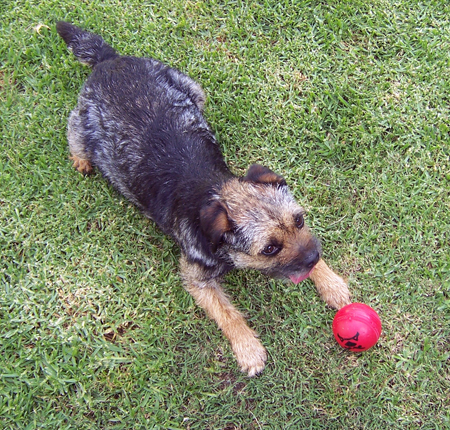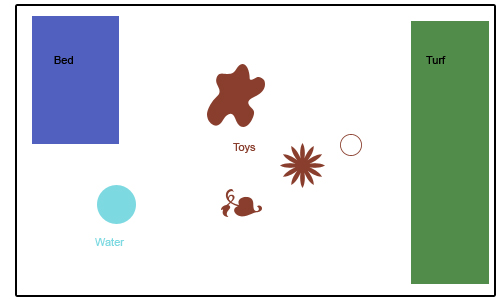This post is part of the series in response to Dunbar’s 2012 Australian seminars. See index.
Dunbar is big into socialisation. He believes a puppy should meet 100 people before it is 8 weeks old, and 100 people in its first month in its new home. That is, a puppy should’ve met 200 people by the time it is 16 weeks (4 months) old. Dunbar believes in recruiting these people by whatever means possible in order to prevent fear behaviour. As he rightly points out, fear behaviours are easier to prevent in puppyhood than they are to ‘fix’ in adult dogs (which he calls a big project).

Dobermann puppies being socialised to handling by many different people. Photo © Ruthless Photos.
Socialising a puppy is easy, and enjoyable. It teaches the dog to enjoy people (and so it doesn’t want to bite them) and teaches the dog to enjoy being hugged and petted (or restrained and examined).
One of the joys with puppies is that they can be flooded. Throwing a party, and encouraging people to wear costumes, is okay! As is taking them to venues with a lot of things happening.
One of Dunbar’s take home messages, particularly to breeders, is not to worry too much about diseases. Parvovirus is spread by poo, and he thinks that asking visitors to remove shoes before entering the house is sufficient enough prevention. He defines the floor of a vet carpark or a vet clinic is high risk, but that’s about it. I very much agree with Dunbar in this regard: The risks of not socialising is much more likely to kill a puppy (i.e. behavioural problems) than parvovirus.
Puppy classes are nice, but are not good enough to adequately socialise a puppy alone. New puppy owners should put a lot of attention into making that puppy, at the very least, socialable with family and immediately family, or anyone who visits the house on a semi-permanent basis. This means that they are less likely to give the puppy at a later date, and so the puppy stays at its original home forever. Puppy classes aren’t the answer to this, but adequate and extensive socialisation is!





